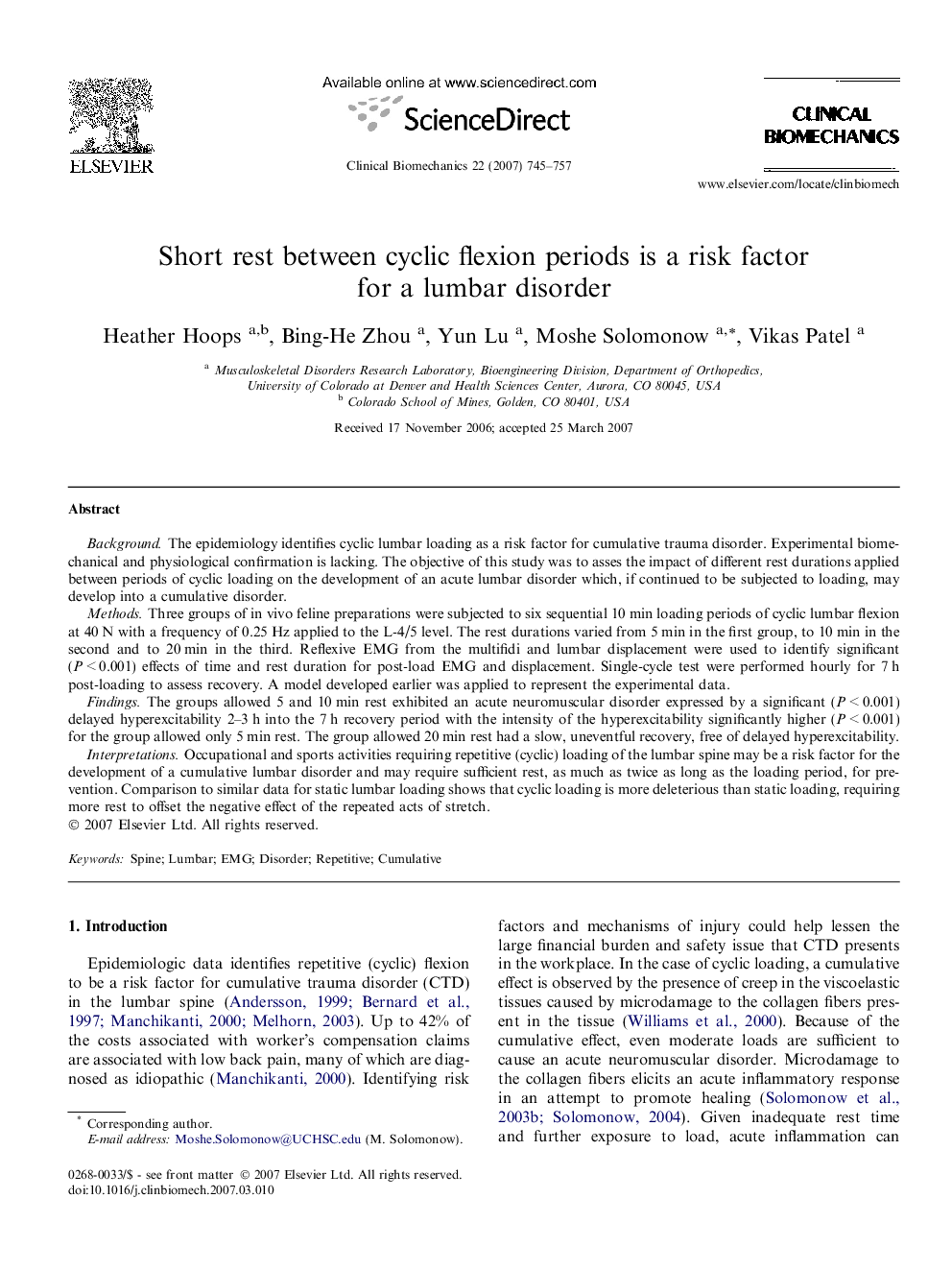| Article ID | Journal | Published Year | Pages | File Type |
|---|---|---|---|---|
| 4051255 | Clinical Biomechanics | 2007 | 13 Pages |
BackgroundThe epidemiology identifies cyclic lumbar loading as a risk factor for cumulative trauma disorder. Experimental biomechanical and physiological confirmation is lacking. The objective of this study was to asses the impact of different rest durations applied between periods of cyclic loading on the development of an acute lumbar disorder which, if continued to be subjected to loading, may develop into a cumulative disorder.MethodsThree groups of in vivo feline preparations were subjected to six sequential 10 min loading periods of cyclic lumbar flexion at 40 N with a frequency of 0.25 Hz applied to the L-4/5 level. The rest durations varied from 5 min in the first group, to 10 min in the second and to 20 min in the third. Reflexive EMG from the multifidi and lumbar displacement were used to identify significant (P < 0.001) effects of time and rest duration for post-load EMG and displacement. Single-cycle test were performed hourly for 7 h post-loading to assess recovery. A model developed earlier was applied to represent the experimental data.FindingsThe groups allowed 5 and 10 min rest exhibited an acute neuromuscular disorder expressed by a significant (P < 0.001) delayed hyperexcitability 2–3 h into the 7 h recovery period with the intensity of the hyperexcitability significantly higher (P < 0.001) for the group allowed only 5 min rest. The group allowed 20 min rest had a slow, uneventful recovery, free of delayed hyperexcitability.InterpretationsOccupational and sports activities requiring repetitive (cyclic) loading of the lumbar spine may be a risk factor for the development of a cumulative lumbar disorder and may require sufficient rest, as much as twice as long as the loading period, for prevention. Comparison to similar data for static lumbar loading shows that cyclic loading is more deleterious than static loading, requiring more rest to offset the negative effect of the repeated acts of stretch.
